Breadcrumb
This resource is part of:
Part Five: Violence and Backlash
Video Length
16:46Subject
- History
Language
English — USUpdated
Part Five: Violence and Backlash
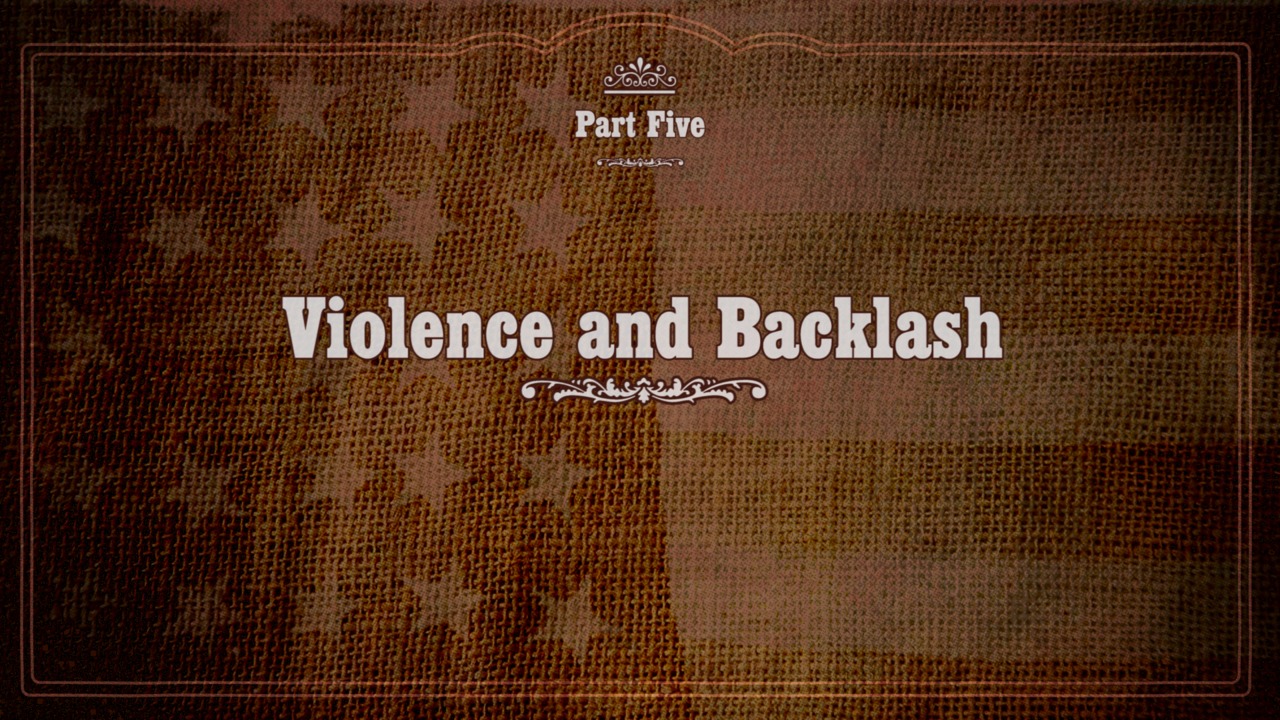
[MUSIC PLAYING]
There is in American history, throughout American history, a long and rich tradition of backlash against social progress, and particularly racial progress. And so Reconstruction places this into violent relief, because it was really-- at that point in American history-- the first time where you saw a kind of revolutionary possibility for racial progress.
[MUSIC PLAYING]
But like in everyone's history, whenever there's a revolution there's always a counter-revolution. Terror-- which we hear so much about in the world today-- this was homegrown terror in the United States. Born of defeat, born of loss, born of this ex-Confederate rage at their condition and their situation. Believing as they did that the damn Yankees, and the Union government, and the federal government had come into the South, taken over their society, freed all these former slaves, put them in political office, allowed them to vote, and they had come to believe that there was no point in participating in this political process. It was not their democracy. And they believed the only way to react to it was with guns and violence to destroy it.
[MUSIC PLAYING]
[SINGING] Wanna hear you say take the hand of your brother.
I think the violence that you see during Reconstruction is certainly connected to an idea that the United States-- and the South in particular-- is exclusively for white people. That black people do not have a place in this country, unless it's on terms of absolute subservience. But I do think you see the violence manifested in different ways for different purposes.
[MUSIC PLAYING]
The violence in the immediate aftermath of the Civil War is the violence of a social system that has collapsed, and no one knows what the new etiquette is going to be. Everyone knew how a slave was supposed to behave. But nobody knew how a former slave was supposed to behave.
Violence flares over what seemed to us completely trivial things. A guy doesn't tip his hat. A black guy doesn't tip his hat to a white on the streets, and suddenly people are shooting at each other. A black guy walks into a church trying to worship, and suddenly people are being killed.
[MUSIC PLAYING]
At the same time, you do see other incidents of violence-- race riots in New Orleans, in Memphis, that speak to more organized forms of resistance.
[MUSIC PLAYING]
Then when blacks get the right to vote, violence becomes more and more political. By 1867, '68, you get, already, the Ku Klux Klan. Now the Klan is not a highly centralized organization. It doesn't have a president. It's local groups all around the Southern states. And even though they are localized, they have the same basic aim which is to restore white supremacy.
[MUSIC PLAYING]
Their primary goal was political. Their primary goal was to stop black politics, to destroy the Republican Party, and particularly to stop black people from voting.
[MUSIC PLAYING]
White terror became a fact of life. White mobs could come and burn their houses, could rape women, could lynch men, could brutalize and terrorize people.
[MUSIC PLAYING]
No one was immune from it-- men, women, children, the most respectable African Americans-- that was not an inhibitor to having incredibly, at times, spectacular forms of violence being inflicted on you. This really spoke to how invested many white Southerners were in a way of life prior to the destruction of slavery that rendered black people as less than human. And one of the ways to hold on to that idea was through the violent dehumanization of black people, of black bodies.
[MUSIC PLAYING]
Early Klan violence, though, was committed against as many white Republicans as it was black Republicans. If you were a white Republican-- a so-called scalawag-- or a white Unionist in a certain region of the South and you joined the Republican Party, you were vulnerable. It becomes very dangerous in some places to be a Republican official. Local leaders are assassinated, or driven from their homes, or beaten.
[MUSIC PLAYING]
These are night time lynchings, burnings, murdering, stabbings, beatings-- really, really violent stuff.
[MUSIC PLAYING]
And in 1868, they kill about 1,000 people before the election.
In 1868, Klan violence is so pervasive in Georgia that actually the Republicans lose the state to the Democrats, because black people are just too intimidated to come and vote.
[MUSIC PLAYING]
If you think about this being a war in which there were no militarily-related hangings for treason or anything. It's not like people didn't die during Reconstruction. It just wasn't the people who had started the war. It was people who were trying to heal the country.
[MUSIC PLAYING]
One of every 10 black members of these constitutional writing conventions for the new reconstructed governments in the South-- and there were dozens and dozens of blacks that participated-- one of every 10 of them was either murdered or wounded by vigilante violence. You risked your life by even participating in this new Reconstruction political process.
[MUSIC PLAYING]
The Klan is very active 1869, '70. And then by 1871, President Grant, using these Enforcement Acts-- which are passed by Congress-- sends troops into parts of South Carolina. He sends federal marshals to Alabama, and other places. They round up Klansmen. They put them on trial.
They even held what became known as the Ku Klux Klan Hearings. And they would allow victims of Klan violence to come in and testify about what had happened to them. And they even allowed perpetrators to come in and testify in their own defense. Nothing like this had ever occurred in American history, congressionally sponsored hearings to investigate social and political violence within the states.
[MUSIC PLAYING]
But in the end, the courts only prosecuted a handful of people. And all of that violence in the South-- several thousand people killed in this violence, untold others wounded, intimidated, abused-- no one served more than five years for any Klan crime. And all of them are free and out by 1876.
But they actually do break the back of the Klan. And by 1872, violence is much less pervasive in the South.
[MUSIC PLAYING]
Then in 1873, the country and the Western world enters a serious economic depression-- The Depression of 1873 to '78. And in a way, that pushes the Reconstruction issue off the political agenda. The agenda is now labor, capital, employment, unemployment, labor strife-- very violent strikes begin to take place. Secondly, in 1874, because of the economic downturn, the Democrats-- for the first time since the Civil War-- win control of the House of Representatives. And therefore there's not going to be anymore federal intervention, because the Congress can no longer be relied on to engage in that.
And so by 1874, '75, '76, you get a different kind of violence. It's open. The Klan went around in hoods, and costumes-- even though people knew who they were-- but they were in disguise. Now you get open violence, where people are in your face with it. And the aim is explicitly about elections. To win elections, which will enable them to take over the state governments in these places.
[MUSIC PLAYING]
If one person were shot today at a voting poll, it'd probably stop the election in that town. CNN would have a helicopter there filming everything. You have to try to imagine 40 people murdered near a voting poll, 60 people murdered near a voting poll, massacres committed to intimidate a community, to make sure they didn't try to vote.
[MUSIC PLAYING]
In Colfax, Louisiana in 1873, blacks and some whites joined together to elect the slate of candidates. And white vigilantes came and killed a hundred people in order to overturn that election. And the Supreme Court said that there had been no civil rights violation there. That this was simply one group of private citizens acting with another.
[MUSIC PLAYING]
It's the largest political massacre in all of American history. And it needs to be seen for what it was. Terror, being used as a kind of politics, as a way of intimidating somebody, as a way of thwarting their aspirations on any level.
[MUSIC PLAYING]
One of the effects that the incredible violence in the South did, was exhaust the will of the North, and of the federal government to continue investing in Reconstruction, to continue investing in the protection of black people.
It's people saying look, we gave black people their freedom, we gave them the right to vote, we crushed the South, we're tired of it, enough already, get over it. The problem of Reconstruction is over and it's not our problem anymore.
[MUSIC PLAYING]
Before the election of 1876, when Democrats are trying to take back over the rest of the Southern states, and to be in control of the South once and for all, they do things like hold gun rallies outside of Republican political meetings. They wear certain clothing. They identify themselves in South Carolina, for example, by wearing red shirts. They make it clear that it would not be good for your health to be voting for Republicans.
Those terror groups tended to now be a kind of unofficial wing of the Southern Democratic Party, without a question. They were one and the same often. They even responded to Southern governors.
[MUSIC PLAYING]
I think all of us love the idea that we might be the ones out there insisting on voting, and I wish we all were. But if it were a question of making sure that your kids were going to eat the next day, or casting a vote, a lot of people decided that discretion was the better part of valor and didn't show up to vote.
[MUSIC PLAYING]
And that election of course turns into a dispute, because no one won the Electoral College on the first count. And they have to go through this beleaguered, corrupt count out of which came a compromise that made Rutherford B. Hayes president, and gave the last remaining Southern states back to the Democratic Party. And in effect, sacrificed the rights of the freed people to the Southern states themselves for a long time to come.
[MUSIC PLAYING]
So what this meant was that the freedoms that initially put black men and women into the state legislature, into the Congress, enabled them to vote, enabled them to serve on juries, enabled them to own businesses, were undermined by vigilante violence, by new laws that were passed to constrain them. But I think of the dividing of blacks and whites, in a way differently, I think, from a lot of people.
If you have to use the Klan, if you have to use state militias, if you have to murder 100 black people in Colfax, Louisiana to prevent blacks and whites to work together, it means you have to exert enormous force, because otherwise it would have been OK. Because people wanted to do it. In other words, the degree of brutality and repression was only because of the strength of that democracy was so great. If you didn't use force against it, it wouldn't have died. And that indicates to me that there was always a chance to restore those relations.
[MUSIC PLAYING]
Part Five: Violence and Backlash
Please note that this video contains dehumanizing imagery. We have chosen to include it in order to honestly communicate the images that the public saw at the time.
Supporting Materials
How to Cite This Video
Facing History & Ourselves, “Part Five: Violence and Backlash”, video, last updated May 13, 2015.
You might also be interested in…
The 1963 Chicago Public School Boycott
Backlash and the KKK
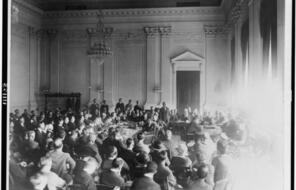
Shifting Public Opinion
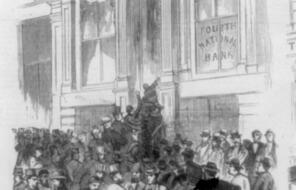
Political Violence and the Overthrow of Reconstruction

The Unfinished Revolution
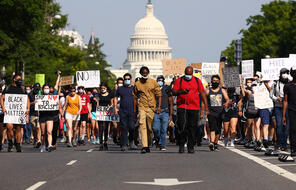
Accountability, Justice, and Healing after Derek Chauvin's Trial
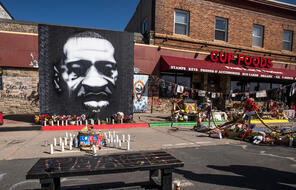
Current Events in the Classroom

Policing and the Legacy of Racial Injustice

We the People: Expanding the Teaching of the US Founding
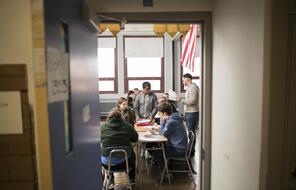
Developing Student Agency through History and Literature: Middle School Curriculum
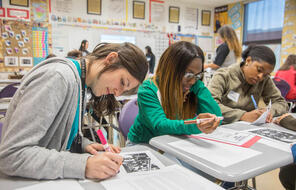
Reexamining History: How Can We Engage with the Stories We’re Told?

Supporting Question 4: Memory of the Founding


